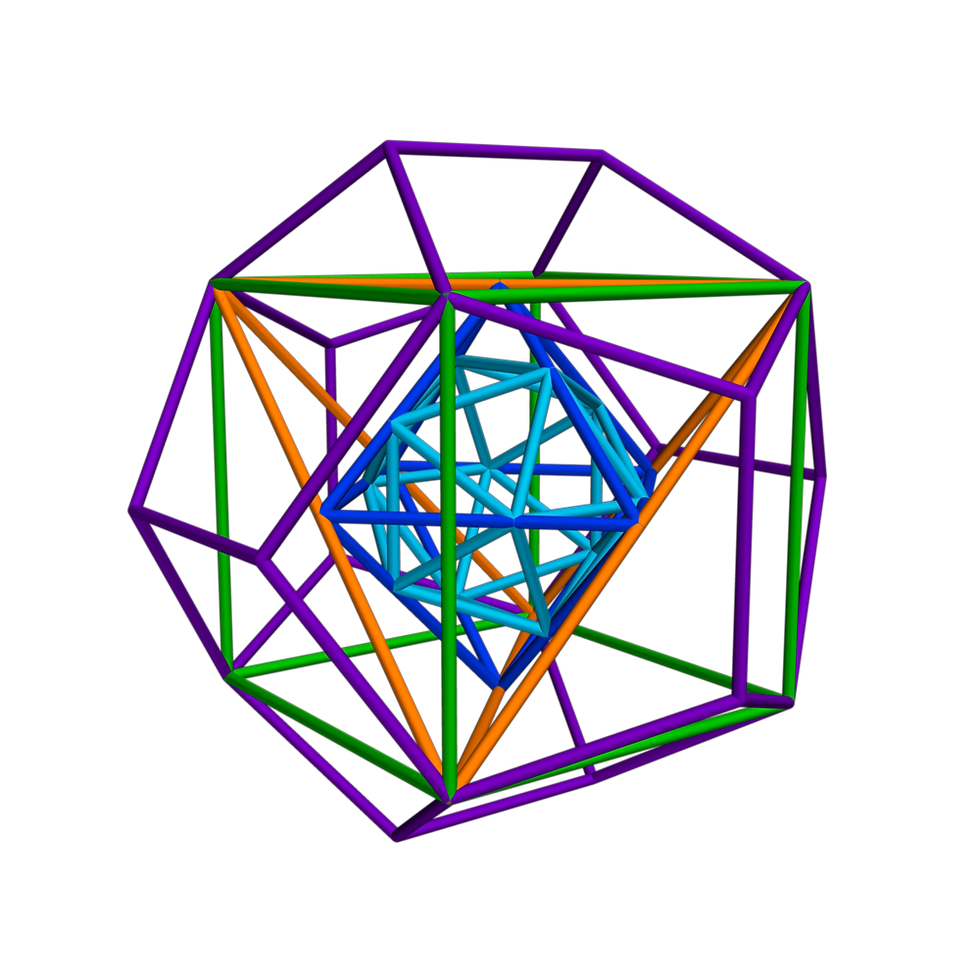The most familiar representation of Metatron’s cube is the two-dimensional figure with the thirteen circles. Unfortunately, this is not an accurate depiction of Metatron’s cube. A more accurate depiction of Metatron’s cube would be a three-dimensional model. The picture below shows a three-dimensional model of Metatron’s cube drawn in three-point perspective.

The above representation of Metatron’s cube has some limitations. Metatron’s cube is multidimensional and therefore cannot be rendered accurately in this third dimensional world. But perhaps what is most significantly lacking is the movement of Metatron’s cube. Each Platonic solid shape within Metatron’s cube is moving. Remember, the movement provides the energy and moving in different patterns gives rise to the variability of the energy.
Nesting the Platonic Solids
In my last blog, I included short videos that depicted each individual Platonic solid rotating. In this blog we are going to nest the Platonic solids together within Metatron’s cube. I have a short video that puts them all into motion. This is a more accurate depiction of Metatron’s cube. The goal here is to be able to envision a moving model of Metatron’s cube within your mind’s eye. This is important because we will work with Metatron’s cube using our minds and the easier it is to visualize the model in our mind’s eye, the easier it will be to work with.
If you haven’t worked with the individual images of the Platonic solids in the last blog, I suggest you take the time to do that now. You may even want to review the last blog just to refresh the images in your mind.
The video below starts out with the tetrahedron. Then an inverted tetrahedron is added. The next shape is the octahedron. Then you will see the hexahedron. This is followed by the dodecahedron and then finally there is the icosahedron. Each one of the shapes has a different color to make it easier to distinguish from the others. After all the shapes are nested together and moving, each one is removed in the reverse order in which it was added. The last shape is removed first and so on. That happens until we are back at the tetrahedron all by itself. Then the sequence repeats itself.
The purpose of this video is to show how the Platonic solids are stacked or nested within each other in Metatron’s cube and to show the motion of the solids within the cube. This is part of the functionality of Metatron’s cube that you don’t ever appreciate when you look at the familiar two-dimensional image of Metatron’s cube.
Work with this video until the three-dimensional image of a moving Metatron’s cube becomes familiar to you. There is more functionality in the moving cube that involves projective geometry and duality. I will discuss duality in the next blog. Don’t worry. There isn’t any math involved. And there won’t be a quiz.
Comments